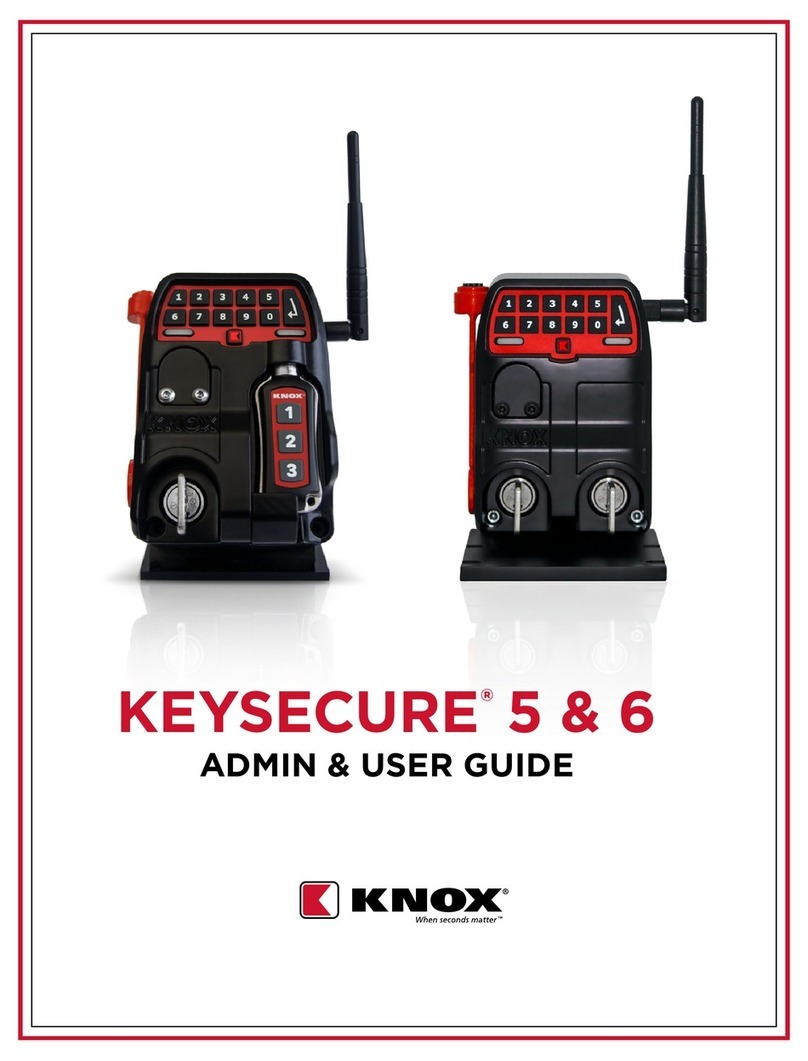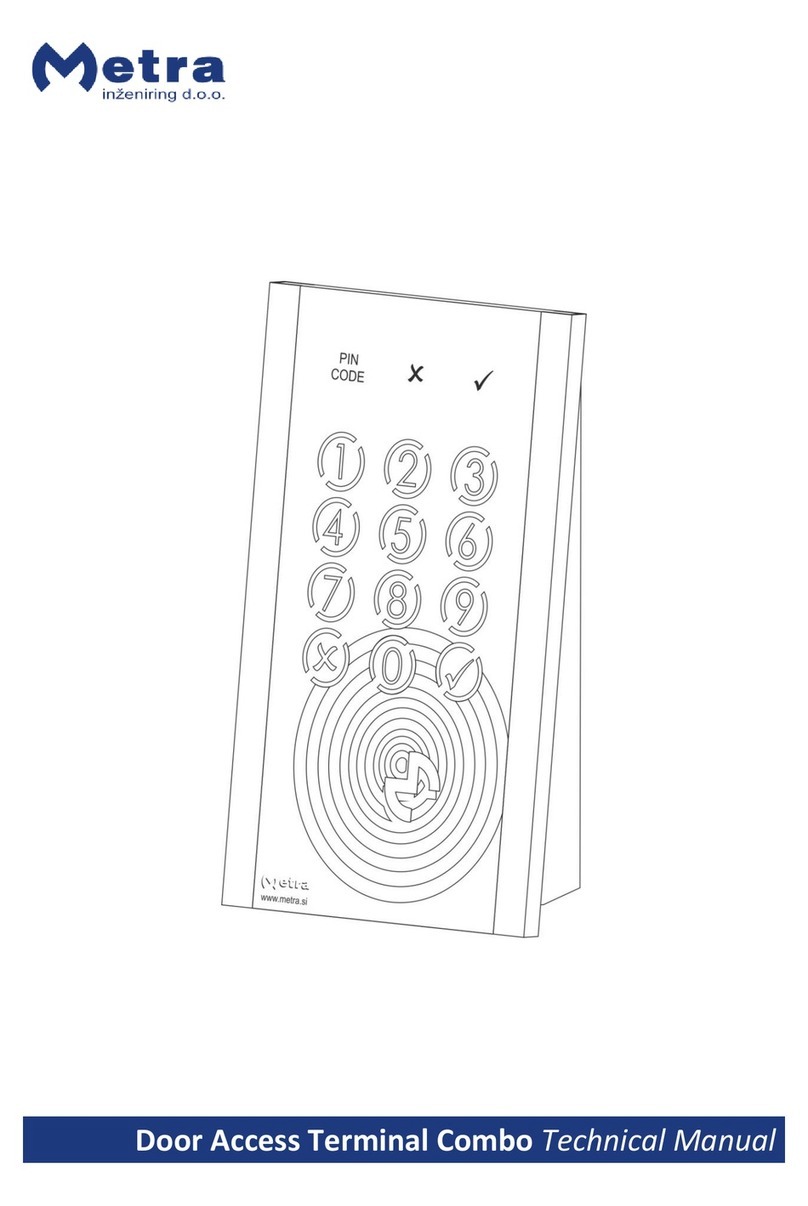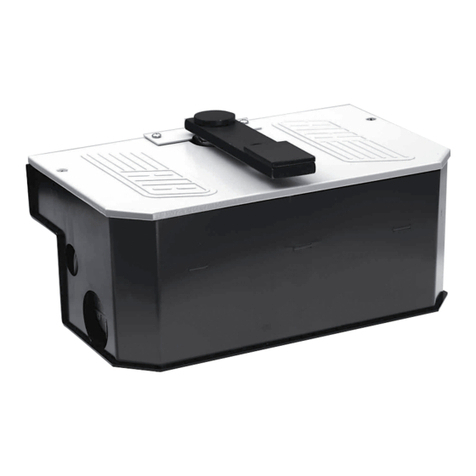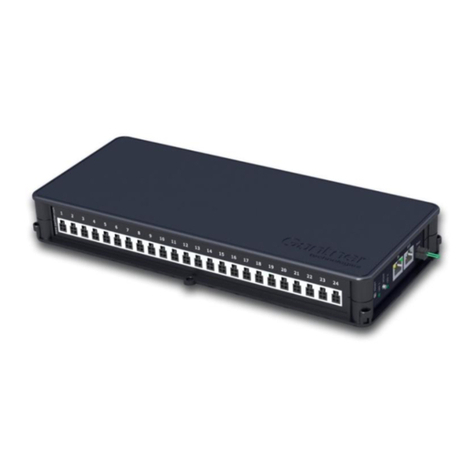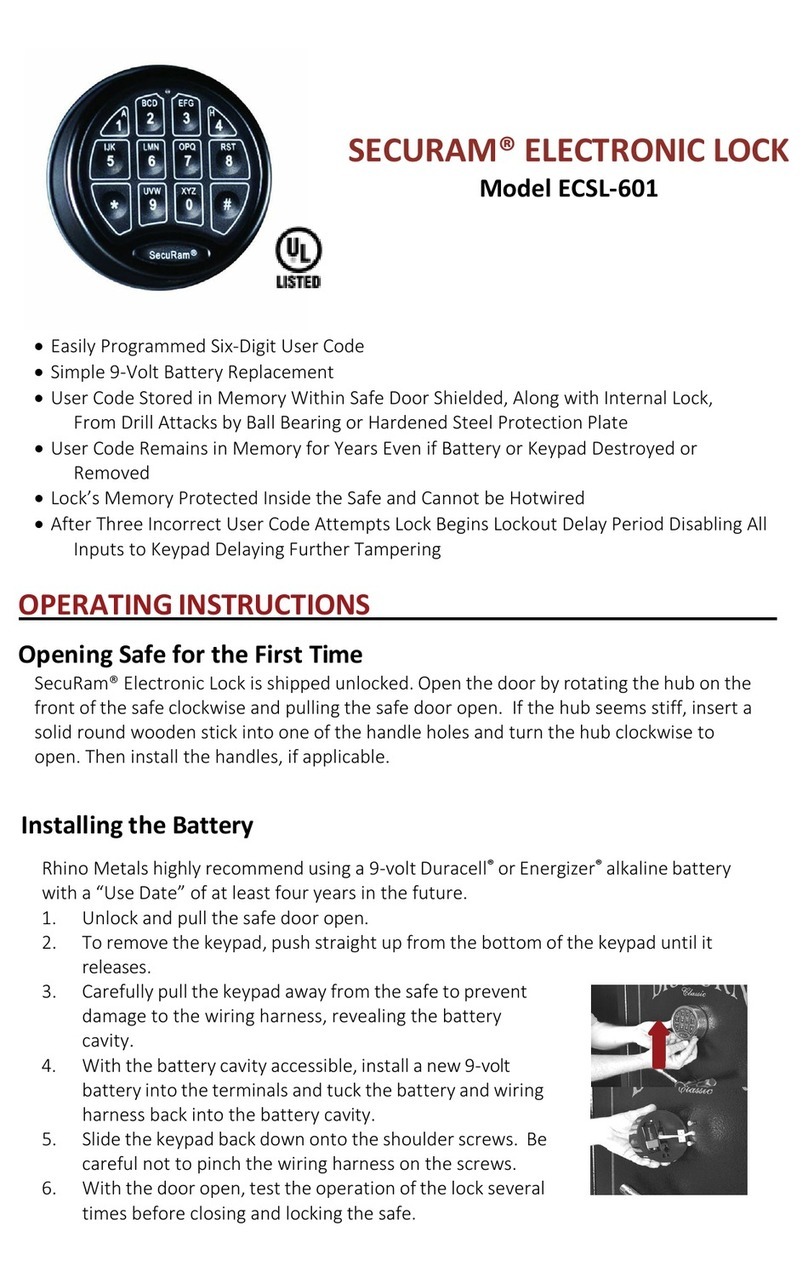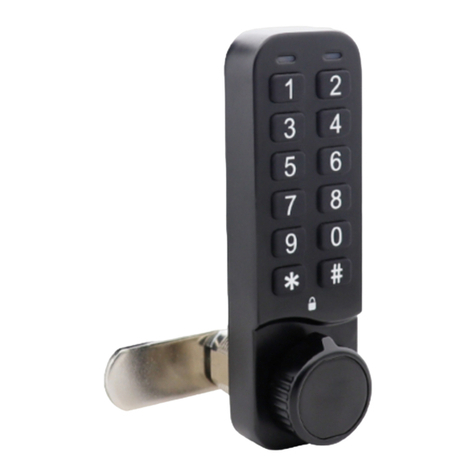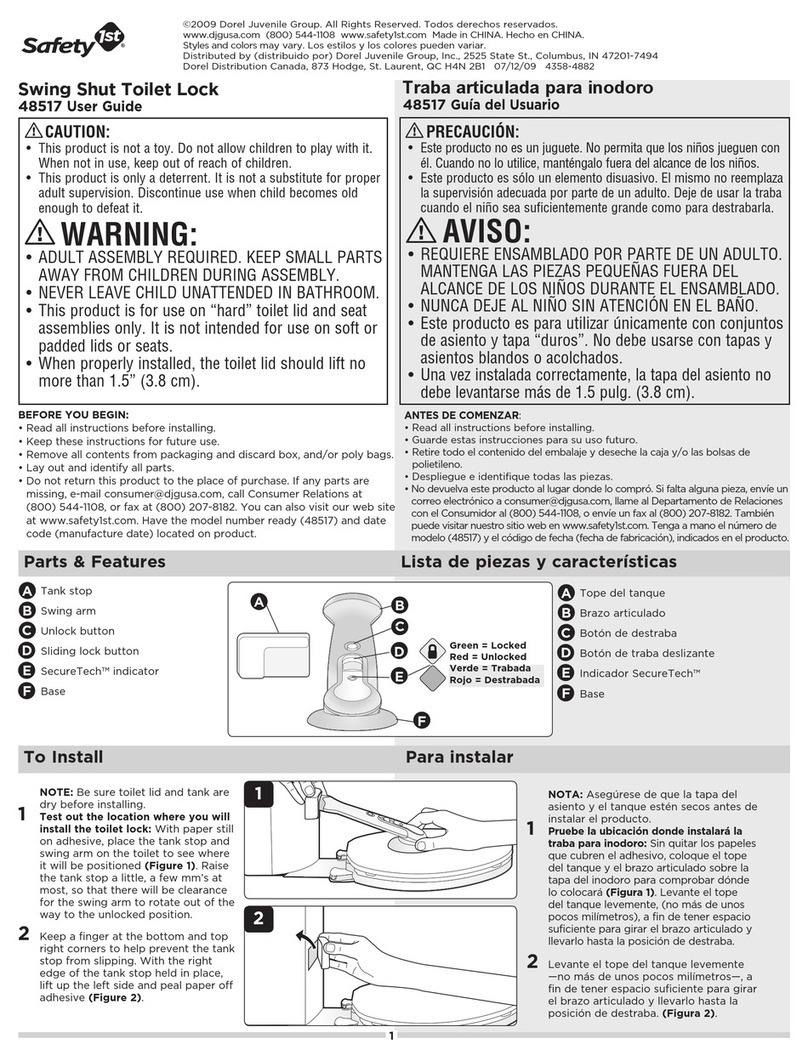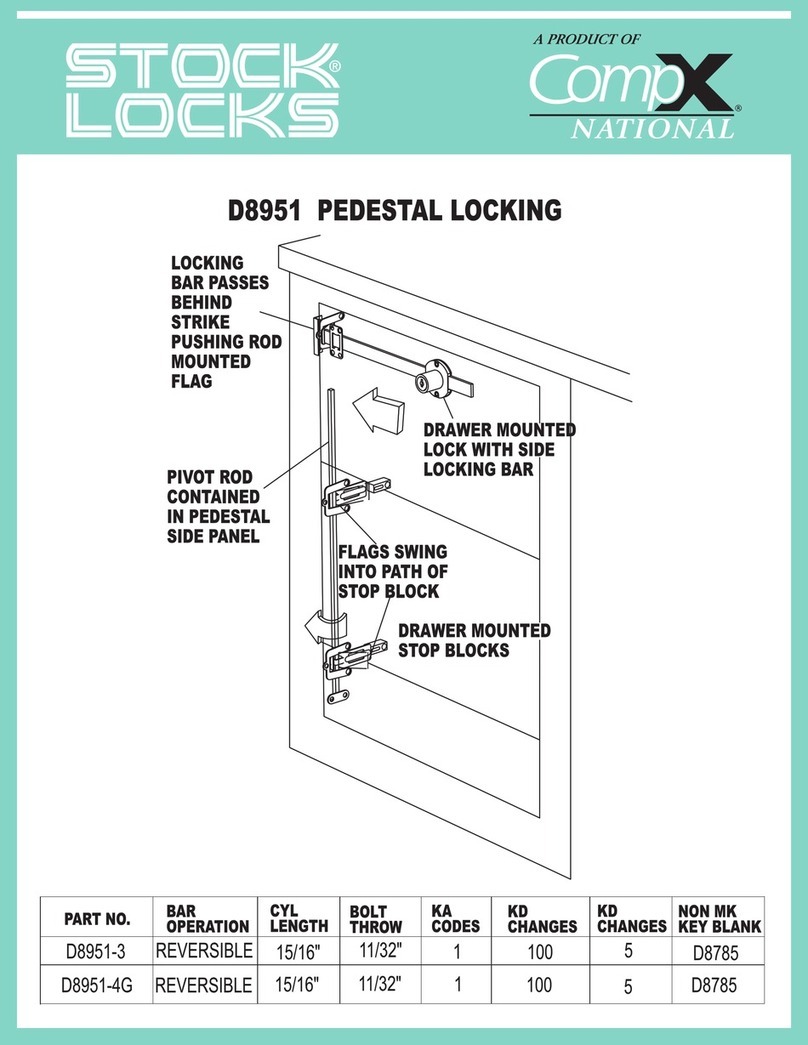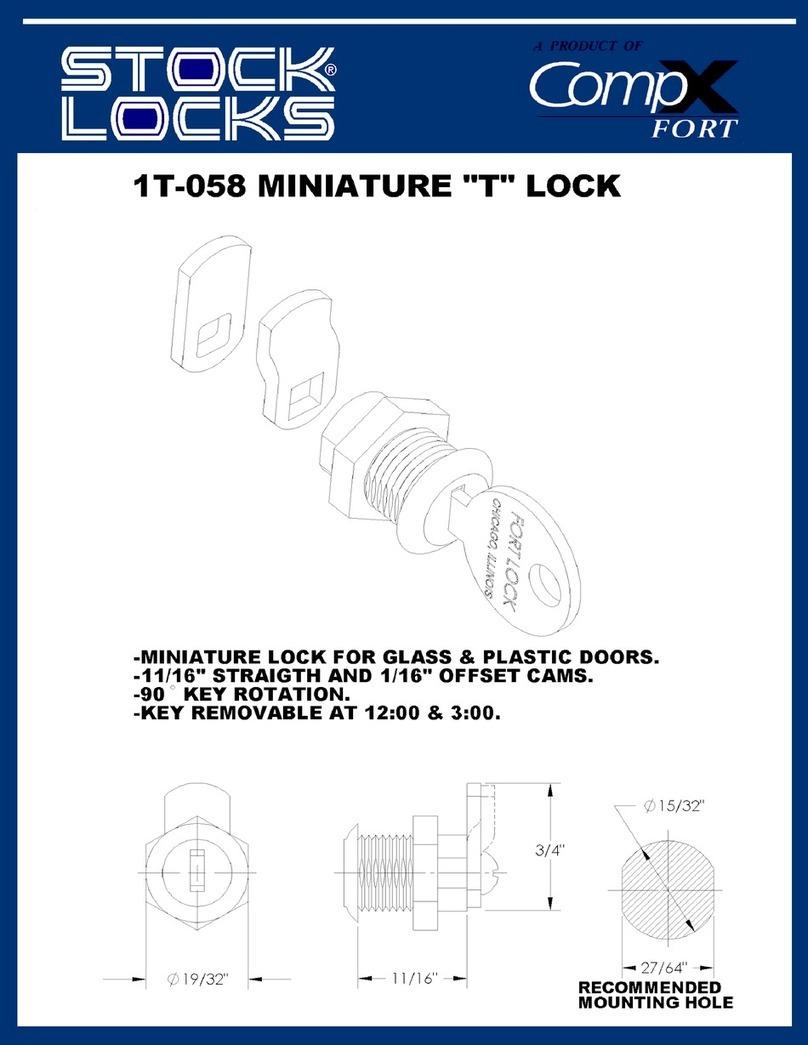
L'elettroblocco per l'automazione EVOLUS è disponibile in 3 modelli, che si differenziano fra di loro per il comportamento in
mancanzadialimentazione.
ELETTROBLOCCO-SLIM - ITA/GB - Rel.1.0 - 03/2010 - CD0530_R2
ELETTROBLOCCO SLIM per automazione
ELETTROBLOCCO SLIM per automazione
a) FAILSAFE“EV-EBSFSA”
In caso di mancanza di alimentazione, sia della tensione di rete che della batteria di emergenza,
l'elettrobloccoliberaleante,chepossonoquindiesserespostatemanualmente.
b) FAILSECURE“EV-EBSFSE”
Incasodimancanzadialimentazione,siadellatensionedi rete
che della batteria di emergenza, l'elettroblocco mantiene le
antebloccate.
c) BISTABILE“EBSBIS”
In caso di mancanza di alimentazione, sia della tensione di rete che della batteria di emergenza,
lostatodell'elettrobloccorimanenellaposizioneincuisitrova.
Quindi le ante sono libere se l'elettroblocco non era attivato, oppure restano bloccate se
l'elettrobloccoerainserito.
2) POSIZIONAMENTO e COLLEGAMENTO ELETTRICO
Le quote di fissaggio dell'elettroblocco sull'automazione sono specificate nel Manuale di
installazionedell'operatoreEVOLUSRel.1.6(Paragrafo2.3).
L'elettrobloccoèfissatoall'automazionemediante2vitiM6X10suidadiM6,chesitrovano
nell'appositacavainferioredellatraversa.
I carrelli di scorrimento devono essere regolati in modo che, nella posizione di chiusura
delle ante, la leva dell'elettroblocco possa agganciare la staffa del carrello e mantenere le
antebloccate.
Nelkitelettrobloccovienefornitoilcavodialimentazione,ilquale daunlatosipresentaconidueconduttoricheandrannocollegatiai
fili di uscita del solenoide dell'elettroblocco mediante gli appositi morsetti, dall'altro termina con una connessione che andrà inserita
nelconnettoreLOCK1abordodellacentralinaelettronicadell'operatoreEvolus.
Nel caso dell'elettroblocco bistabile EV-EBSBIS sarà presente un secondo cavo di alimentazione, che andrà collegato ai cavi del
solenoide secondario (LOCK2) dell'elettroblocco da un lato e all'uscita LOCK 2 della centralina elettronica dall'altro lato dove è
presenteilconnettore.
Gli elettroblocchi sono forniti in Kit, che comprende le staffe di
aggancioegliaccessoridifissaggio.
SLIM ELECTRIC LOCK for automation
SLIM ELECTRIC LOCK for automation GB
1) DESCRIZIONE GENERALE


